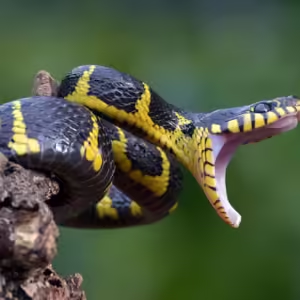A 3D fossil of a fish with its eyeball intact was discovered along with many sea creatures in a field belonging to a farmer in Gloucestershire, UK.
The fossil is believed to be about 183 million years old. Image credit goes to Dr. Dean Lomax.
A very well-preserved ancient fish was found in a farmer’s field in Gloucestershire, UK. Estimated to be about 183 million years old, this 3D fish, still having its eyeball, was dug up along with various sea creatures previously hidden beneath a field where English Longhorn cattle grazed.
“These fossils are from the Early Jurassic period, known as the Toarcian,” explained fossil collectors Sally and Neville Hollingworth to IFLScience.
“The clay layers at this site near Stroud have revealed many well-preserved fossils of marine animals. They are similar to the famous Strawberry Bank Lagerstätte in Ilminster, Somerset, known for its exceptional fossil preservation. Excavations in Kings Stanley over the past week have uncovered a wealth of fossil material, especially from a rare layer of rock not seen since the late 1800s.”
With just a digger, a team of eight scientists, including Dr. Dean Lomax, discovered a wealth of fossils at Court Farm, Kings Stanley. They cracked open hundreds of limestone nodules to see what was inside them. You might recall Dr. Lomax from the post about the largest and most complete Sea Dragon fossil found in the UK, which is also about 180 million years old.

The amazing fossils contained skin and even eyeballs. The image credit goes to Dr. Dean Lomax.
After being hidden deep underwater, these limestone nodules were dug up for the first time in a century. Scientists were surprised to find prehistoric squids, marine reptiles, insects, and fish inside them. Among these, a fish fossil was found with its scales, fins, and eyeballs still intact. These eyeballs were so well-preserved that researchers were able to create a 3D model of the Jurassic fish named Pachycormus, complete with its fierce-looking eyeballs.
Here’s a 3D illustration of what has actually been discovered.
“This site, already an intriguing farm in a lovely setting, now serves as one huge outdoor classroom. The lessons cover geology, paleontology, evolution, and climate change. It’s beyond just diversifying for farmers,” said Nigel Larkin, a specialist palaeontological conservator involved in the research.
The amazing discoveries have inspired the team to continue working on this incredible site. Once they find more remarkable 3D fossils, we’ll certainly share them on the Mission.





